ECONOMY



Students are looking to walk the stage this coming week for spring 2023 commencement. Many graduates have a job lined up for their future, but some do not.


According to the Bureau of Labor Statistics, in March 2023 the total nonfarm payroll employment rose by 236,000. Nonfarm payroll measures the number of workers in the U.S. except those in farming, private households, proprietors, non-profit employees and active military.


From March 2021 to March 2023, the unemployment rate fell from 6% down to 3.5%. Although, William Chittenden, associate professor of finance, said that the job market for students might be slowing down right now.



“In the last month [U.S] created about 29,000 jobs, which is about half of what we've been creating every month for the past 12 months,” Chittenden said. “The good news is that we are still driving along down the highway. The bad news is that we might be taking our foot off the gas pedal a little bit.”

SEE ECONOMY PAGE 3

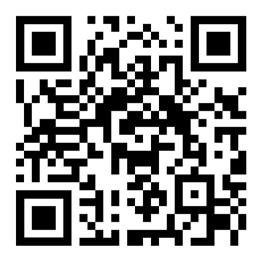
Congratulations to the Texas State University graduating class of 2023! What an honor it will be to gather with thousands of you, our newest alumni, to celebrate your achievement.

As graduation approaches, I hope you feel tremendous pride for what you have accomplished. Many of you overcame great odds – including a global pandemic –to make it to this milestone.
I also hope you feel confident knowing you are prepared for the opportunities and challenges you will encounter as you enter the workforce or continue your studies. All of us at TXST share that confidence in you. We believe in you.
During your time at TXST, you have been supported by a community of the most dedicated and talented faculty and staff I have ever met. I am grateful for the knowledge, inspiration, and care they have so generously shared with you. These gifts will serve you well.

I am confident you are going to take all the lessons you have learned during your time here to make this world a better place. When you have done that, we will know we have done our jobs. You will show the world that Bobcats not only do well, but they also do good. Nothing would make me prouder as your president.



Thank you for choosing TXST to be a part of your journey. On behalf of our Bobcat family, we are so proud of you.
And remember: Once a Bobcat, always a Bobcat! I hope TXST will always feel like home to you.


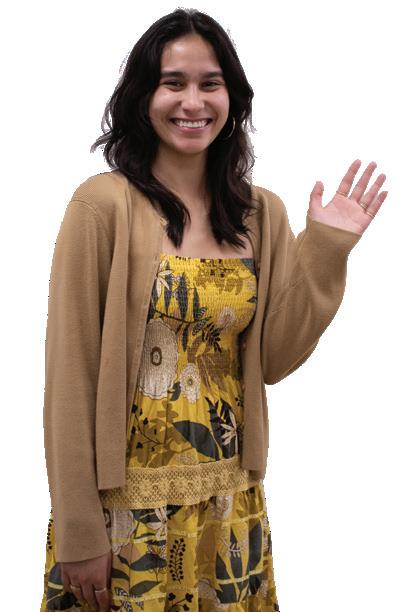 By 2022-2023 Editorial Board
By 2022-2023 Editorial Board

The 2022-23 editorial board term has ended and so has a year of achievements, overhauls and laughs.
It feels like we just started and it was just a few months ago that we were logging onto Zoom for our first budget meeting.
Our term started during the tail end of the pandemic, separated by Zoom meetings and social distancing. Many reporters and editors had never met another member of The University Star. Despite that, it was a collective goal of the editorial board to begin in-person activities again.

We talked extensively at the beginning of our term about bringing a “newsroom culture” back to The Star. Our e-board was in charge of leading the organization completely out of the pandemic, and we knew it had to start with us.


When all of us met for the first time at Camp Star last August, it was blatantly obvious that we were a roomful of extremely diverse personalities. We owe our director, Laura Krantz, and administrator, Caitlin Mitchell, immense thanks for putting together a three-day bonding and learning experience that brought us closer together. Looking back, it’s amazing how quickly we all bonded. Together we sailed through team-building exercises and shared laughs over the funny memories we were making.
Camp Star was our opportunity to get to know one another before embarking on a nine-month journey of spending 13 hours together every Monday to make a

newspaper.
When we gathered for long production days, the guard of reservation we had at the beginning of the summer lowered little by little. We discovered each others’ personalities and how each of them fit into our team. Eventually, the newsroom became more than our workspace. It became a hangout spot where we got to know each other and made new friends as we welcomed new editors to our board. We were achieving our goal of creating a “newsroom culture.”
Awkward silences were filled by a certain news editor’s projecting laugh and voice and the number of inside jokes we had only grew. Our friendships made it outside the newsroom too. Many of us consider each other lifelong friends. The memories and bonds we made will last long after our graduating seniors leave Texas State. We knew when it was time to work, however. The closeness of our friendships made doing our jobs as editors easier, especially with the new systems we put in place to streamline the production process and even out the workload on Mondays.
This editorial is printed on a 14-page newspaper. Days of planning, writing and communicating go into a paper like this. Previously, our design editor would sit at the design desk for 12+ hours designing all 14 pages, which is a grueling process. Staring at a screen for more than half the day is not something we recommend.
SEE EDITORIAL PAGE 8
Trinity Building 203 Pleasant St. San Marcos, TX 78666 (512) 245 - 3487
Editor-in-Chief: Carson Weaver stareditor@txstate.edu
Managing Editor: Nichaela Shaheen starmanagingeditor@txstate.edu
Design Editor: Sarah Manning stardesign@txstate.edu
News Editor: Blake Leschber starnews@txstate.edu
Life & Arts Editor: Haley Velasco starlifeandarts@txstate.edu
Opinions Editor: Rhian Davis staropinion@txstate.edu
Sports Editor: David Cuevas starsports@txstate.edu
Multimedia Editor: Jeffrey Halfen starmultimedia@txstate.edu
Engagement Editor: Zaria Jackson starengagement@txstate.edu
Digital Products Developer: Sri Naga Sri Govvala starasstweb@txstate.edu


Creative Service Director: Michele Dupont starcreative@txstate.edu
PIR Director: Abbie Taylor starpr@txstate.edu
Full-Time Staff
Director: Laura Krantz laurakrantz@txstate.edu
Student Publications Coordinator: Caitlin Mitchell cf1188@txstate.edu
History: The University Star is the student newspaper of Texas State University and is published every Tuesday of the spring and fall and once a month in the summer semesters. It is distributed on campus and throughout San Marcos at 8 a.m. on publication days with a distribution of 3,000. Printing and distribution is by the New Braunfels HeraldZeitung.
Copyright: Copyright Tuesday, May 9, 2023. All copy, photographs and graphics appearing in The University Star are the exclusive property of The University Star and may not be reproduced without the expressed written consent of the editor-in-chief.

Deadlines:
Letters to the Editor or any contributed articles are due on Monday the week prior to publication.
Corrections:
Any errors that are in the pages of The University Star and brought to our attention will be corrected as soon as possible.
Visit The Star at universitystar.com
The nationwide epidemic of fentanyl overdoses has hit close to home for students, as institutions serving the youth across the state have dealt with teen substance abuse issues that have led to the deaths of classmates.
According to Ty Schepis, a psychology professor who studies substance use and misuse, what makes fentanyl deadly is it's potency as an opioid.
"Fentanyl is 100 times more potent than morphine, and morphine is a pretty potent opioid drug," Schepis said.
Fentanyl can be found in many different aspects of the community. One way that people overdose is through taking other drugs that unknowingly have fentanyl laced in.

"People will sometimes get a prescription that they are told is a different opioid like oxycodone and as a cost saving measure and in an effort to make the drug more potent, someone who creates the drug will put a small amount of fentanyl in there," Schepis said.
According to San Marcos Police Department Narcotics Sergeant Tommy Villanueva, a miniscule amount of fentanyl can cause overdose and people should be aware of the signs of an overdose.
"Someone will definitely have their breathing slow down. They will have a lack of response to any stimulus, their pupils will be constricted, their level of consciousness will decrease dramatically, shallow breathing, limp body, gurgling sounds and then pale blue skin tone or the lips turning blue," Villanueva said. "Those are some physical signs of [an overdose]."
Hays County Independent School District (Hays CISD) has lost five students this school year, and Texas has seen a 89% increase in fentanyl-related overdoses from 2020 to 2021, which has led to a push for outreach and education for teens.
Dr. Emilio Carranco, the director of the Student Health Center, stresses the importance of education in the battle, like campus-wide educational campaigns to make students and parents
aware of the risks of taking drugs not prescribed to them and the warning signs that someone could display.
“What we’ve seen since about 2017 is a very steady increase in opioid overdose and death. And that is being driven a lot by the use of fentanyl to lace a lot of these," Carranco said. “I think it is important for us to educate our students."
According to Hays CISD, four students died of overdoses from fentanyl over last summer. With the school year ending shortly, the county is hosting fentanyl awareness assemblies to try to not repeat history from last year.
Texas State is also trying to use its resources to educate the student body through campaigns and trainings.
"We're responding here by first off promoting a campaign on our campus to try to get the word out of people to be careful about this. You may think it's a cheap high, but the consequences could be dramatic," President Kelly Damphousse said. "But we're also training our RAs and our police officers to recognize what a fentanyl overdose looks like."
criminal charges, anti-fentanyl public awareness and making Naloxone, a nasal spray that serves as an opioid antagonist that can reverse an overdose, more available for the public.
According to Schepis, once a user is in an overdose, there is no solution for the user other than to call emergency services.
"The best way to be prepared and to be ahead is to have Naloxone," Schepis said. "Having Naloxone on hand can be the difference between someone living and dying because the individual can get what they need to reverse the overdose and resume normal breathing."
Naloxone can be found in most pharmacies, but is also always on every single University Police officer, and they have training to ensure the proper use of it, according to University Police Department (UPD) Chief Matthew Carmichael.
“Everybody, not just our police officers, but our public safety officers, our new student security program that we’re doing with student government, they’re all going to be trained because they’ll be out in the field,” Carmichael said.
Besides Naloxone, UPD officers are trained in drug awareness, CPR and first aid to help provide assistance to people who may be experiencing an overdose.
Even with the implementation by the university for prevention, training, assessment, counseling, treatment and referral services for the community, according to the Clery report, there were still 117 drug law violation arrests and 65 drug law violation referrals for disciplinary action on-campus in 2021.
The report also shows a decline every year for the past three in drug violation arrests on the San Marcos campus, from 225 in 2019 to 117 in 2021. Even with the descending number, it is recommended that citizens of Hays County stay vigilant and educated on the topic of fentanyl overdoses.
INFOGRAPHIC BY EVA BOWLERThe campaign is Governor Greg Abbott's "One Pill Kills", which promotes amending laws surrounding the classification of the opioid and
"We've been fortunate not to have overdoses result in deaths on our campus," Damphousse said. "But you can't rest on your laurels. We have to keep training people and we have to keep getting the word out to people and hopefully they make wise decisions."
Trigger warning: This article contains discussion of addiction and depression.
When Mike Thompson went for his undergraduate degree at Concordia University in Austin, Texas, he wasn't expected to live past freshman year.
At 10-years-old, Thompson was diagnosed with leukemia, a blood cancer that affects immature white blood cells. Between 1995 and 2002, he experienced over 75 surgeries, a facial reconstruction and two bone marrow transplants, with follow-up procedures until 2006.
Thompson was on pain medication from 2000 to 2008. His prescription occurred during the opioid epidemic, when he and many others were given more medication than needed and became addicted. He later withdrew from school in 2004.
"Not long after the cancer, I just didn't really have a desire to do anything," Thompson said. "That meant have a job, go to school, do anything because I was so overwhelmed with depression and frustration and fear and physical pain. And so I withdrew from that."
Through a self-intervention and support from others around him, Thompson returned from rehab in 2008. While he was off the medication and his jaw hurt from
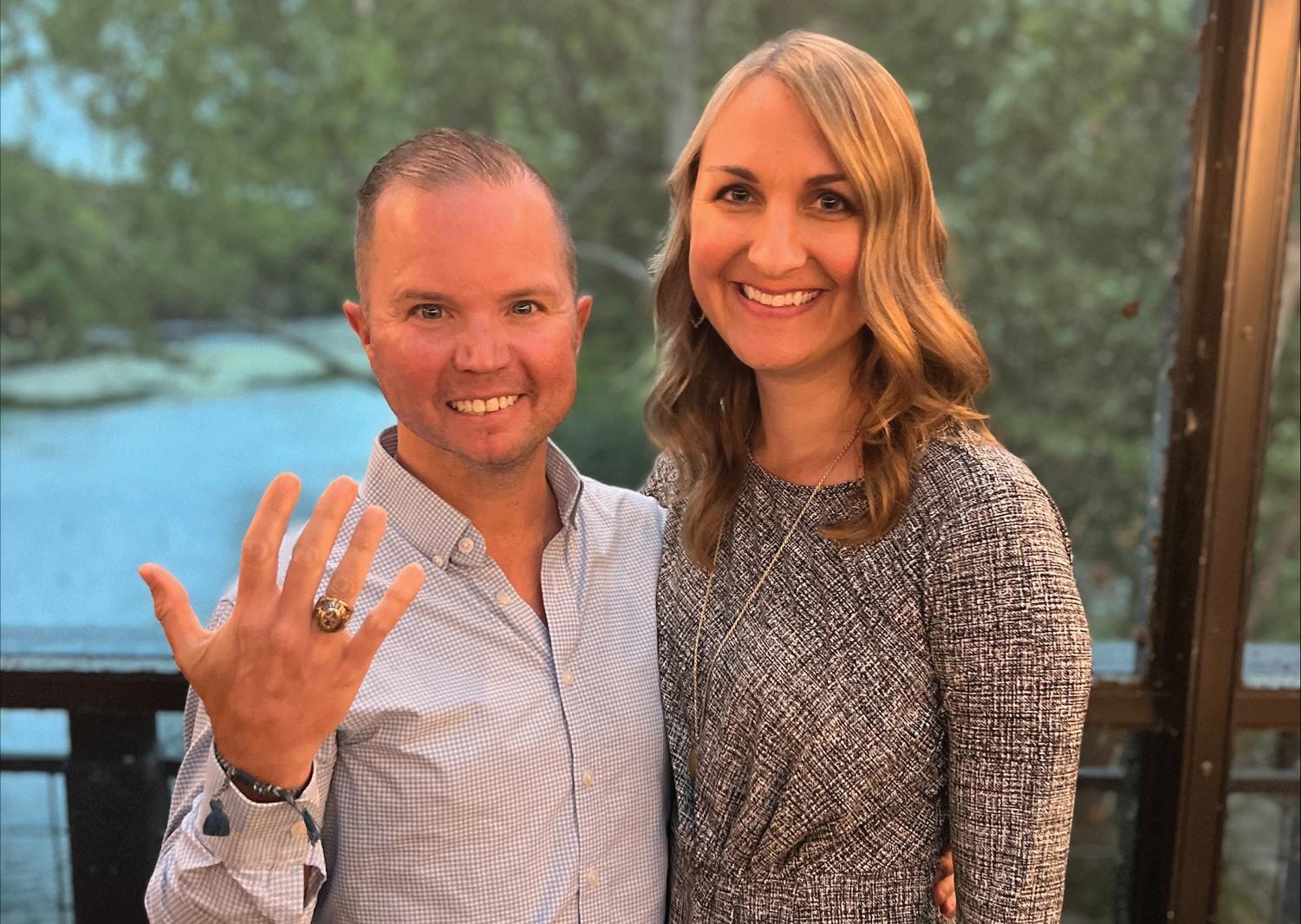
his surgeries, he worked without a degree, including working at a bike shop and for charitable or nonprofit organizations. He connected with his bosses each time and promised them he could understand how to get the job done despite not having a traditional education or background.
Thompson achieved personal milestones during these times, such as participating in the Ironman World Championship in Hawaii in 2012 and climbing Mount Kilimanjaro in 2015. While he still felt pain in his jaw, his judgment wasn't clouded by the pain medication and he wasn't always depressed.
Chittenden predicts a recession coming in the next six to 12 months, which might not be in favor of graduates looking for jobs right now.
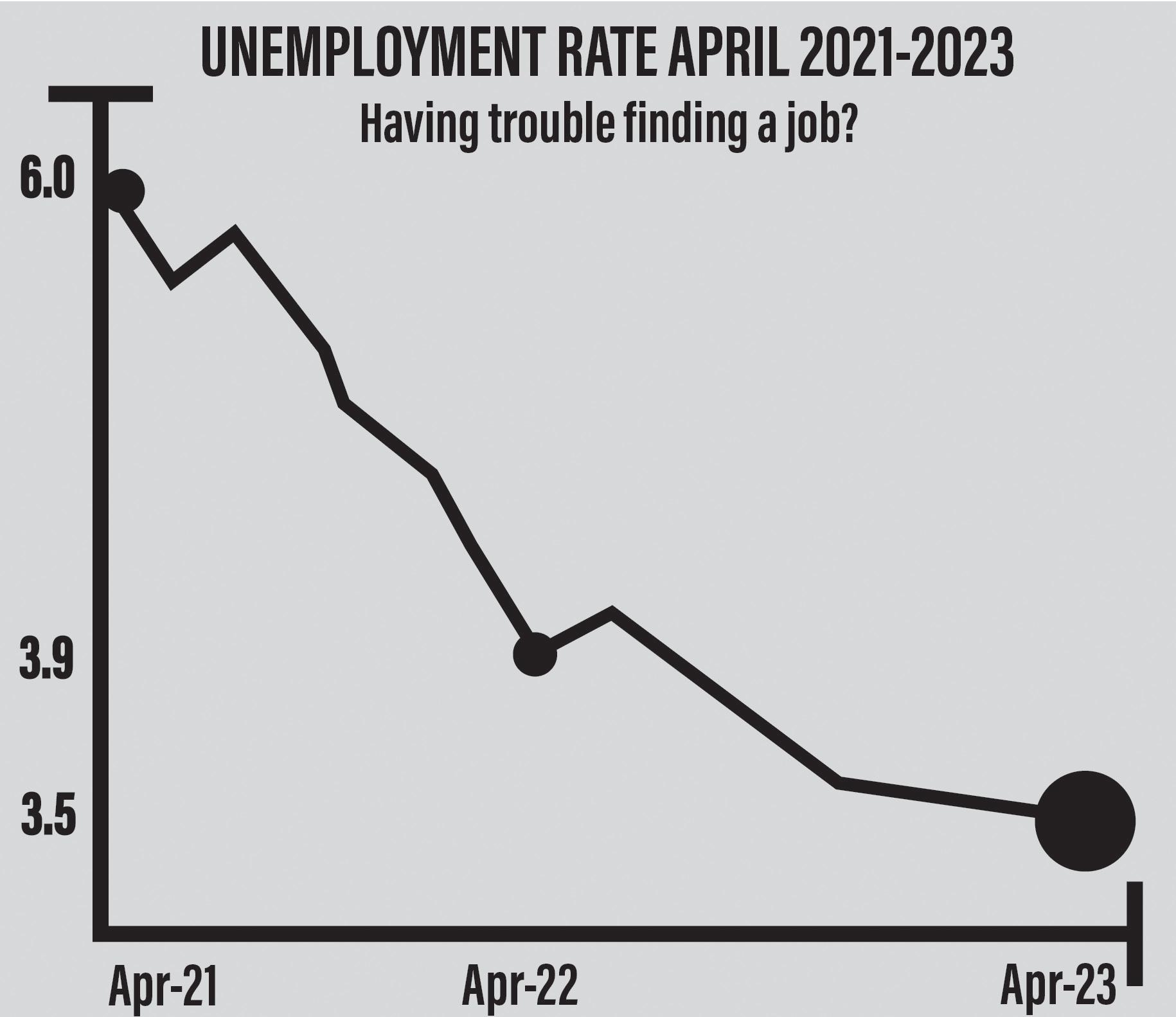
“If we do have a recession, it means that we don't need as many workers so either we stop hiring or actually start laying people off,” Chittenden said. “There are a lot of signs that the recession will happen. The Federal Reserve has been increasing interest rates to try to bring inflation under control.”
As a professor that looks at the data almost every day, Chittenden said college graduates should never give up searching for the job they truly want to do.
“If you see a job ad and it says ‘here's the four things that we're looking for in an employee, make sure in that cover letter you've addressed each of those four things,” Chittenden said. “You know how they're going to scan through all those resumes? They're going to look for who's got these four things.”

to us saying we're not getting enough candidates and there is still certain employers that are desperate. There are others like the service industry, health care and other industries are really having a hard time. We also see big tech laying people off at the same time.”
Rogers advises students to making sure the application process is taken care of thoroughly rather than speed applying without the proper accommodations and preparations.
“Someone was telling me their son sent out multiple applications and hasn't heard anything back, and we hear that a lot,” Rogers said. “Students' time is much better spent applying well to fewer jobs than applying generically or poorly to multiple jobs.”
Laura Jones, assistant director for Employer Engagement, said the best thing students can do is use resources given to them for free by the school.
“I would say take advantage of events with employers,” Jones said. “We put on a lot of fairs. We also put on workshops and sometimes employers are coming to present that and that is one of the easiest ways to go beyond being a piece of paper to that employer.”
President Kelly Damphousse said he want students to know that Career Services is not just for seniors about to graduate, but also undergraduates looking for a job.
“We provide career service opportunities for all our students not just graduating seniors,” Damphousse said. “You can even get a job that is not related to your degree, but of course we want students to get a job related to what they are working on in school.”
Damphousse said that Texas State cares about its students no matter if they are a undergraduate or even a post graduate.
“We have a strong interest in what happens to our students not just while they are here but even afterwards,” Damphousse said. “We understand that we do have a responsibility for workforce development in students.”
Both Jones and Rogers said to continue to apply to jobs even if a recession is coming or not as employers will still hire during those times.
“Focus on what you have the ability to control which is what experience and knowledge and skills you gain while you're here,” Jones said. “It might be a little harder, it might be a little easier. The best thing to do is focus on you.”
INFOGRAPHIC BY EVA BOWLERAccording to the University of Washington, approximately 53% of college graduates are unemployed or working in a job that doesn’t require a bachelor’s degree. It also states it takes the average graduate three to six months to get a job after graduation.
Ray Rogers, director of Career Services, said the job market for students is looking great for some and the opposite for others.
“It’s a tale of multiple job markets,” Rogers said. “Overall, employers are coming
The Texas Senate has passed SB 18, authored by Senator Brandon Creighton. The bill would ban the creation of new tenured positions or any other permanent faculty positions at Texas universities after Sept. 1, 2023, if signed into law.
In 2022, Lt. Gov. Dan Patrick vowed to eliminate academic tenure after the Committee of Counsel on Academic Freedom and Responsibility at The University of Texas Austin released a resolution stating that professors should be free to research any topic.
"Tenure, it's time that that comes to an end in Texas," Patrick said in a news conference last year. "Right now, tenure is reviewed about every six years, and pretty much anything you do in those six years, there's nothing the university could do about it. They can't fire you."
Academic tenure in the U.S. began to take shape in 1940 with the Academic Association of University Professors' (AAUP) 1940 Statement of Principles on Academic Freedom and Tenure. The idea was to create an almost permanent position that would allow professor's to pursue any research, no matter how controversial, without having to worry about job security.
"I think that one of the things that tenure was created to do was to protect faculty to give them freedom of expression that would allow them to untangle complicated ideas," Anadelia Romo, a history professor, said.
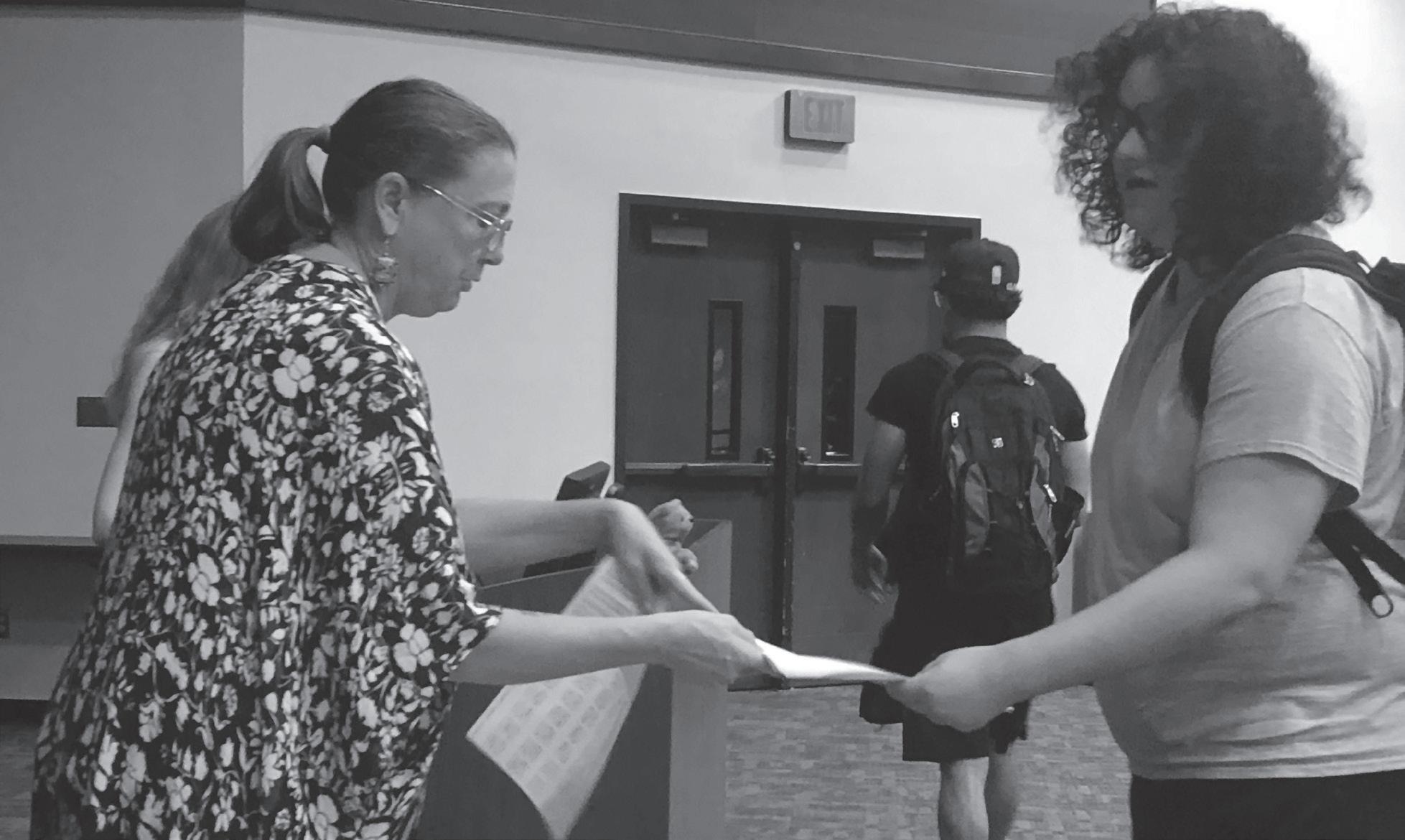
Under the current wording of the bill, no tenure positions could be created after Sept. 1, 2023. Many professors are on the "tenure track", which means they are working towards tenure and would lose all progress made in that endeavor.

"This idea that like, you stay at the university for five years and you're automatically going to get tenure, that's completely false," Omneya Nassar, a lecturer in the chemistry department, said. "And so people are working towards doing all of that, and then all of the sudden you are told, 'Sorry, there's no more tenure.' You're just going to [think] it was all just a waste of time."
Proponents of the bill have said that tenure makes
it unnecessarily difficult to fire professors who have substandard performance, bloat the cost of universities and lead to the professors becoming "out of touch."
“Tenure was originally intended to protect academic freedom and recruit professors, however over the years, the practice has devolved into a costly perk that is detrimental to innovative research and quality instruction and if abused, used as an attack against the brand of the university itself,” Creighton said in a statement.
Critics of SB 18 are worried that the bill may cause top level academics to leave Texas universities for jobs in the private sector or in institutions of higher education outside the state.
"So with job searches, we're looking for the best candidates, but they're also looking for the best universities. So the question is, 'Can we keep attracting talent if we don't have the basic first amendment and job security protections that are built into every top
research institution in this country?'" Romo said.
Many of the critics of the bill also worry that it could create a fluctuating cast of professors, which could lead to disconnect between faculty and students and more classes being taught by less experienced professors.
"I'm worried that another issue that could occur is high turnover. So you'll have a professor come in and get the skills and knowledge that they want to get and then go to a company or to another institution to work there," Nassar said. "And when you get high turnover, now you're constantly going to have inexperienced teachers."
According to a statement by the AAUP, Texas is not alone in it's attempt to end tenure, joining Florida, Ohio and North Dakota.
"Tenure is a means to certain ends, specifically, freedom of teaching and research and of extramural activities, and a sufficient degree of economic security to make the profession attractive to men and women of ability. Freedom and economic security, hence, tenure, are indispensable to the success of an institution in fulfilling its obligation to its students and to society," the AAUP said in a statement.
SB 18 is still currently in hearings in the Texas House of Representatives.
For more information and updates, visit the Texas Legislauture website
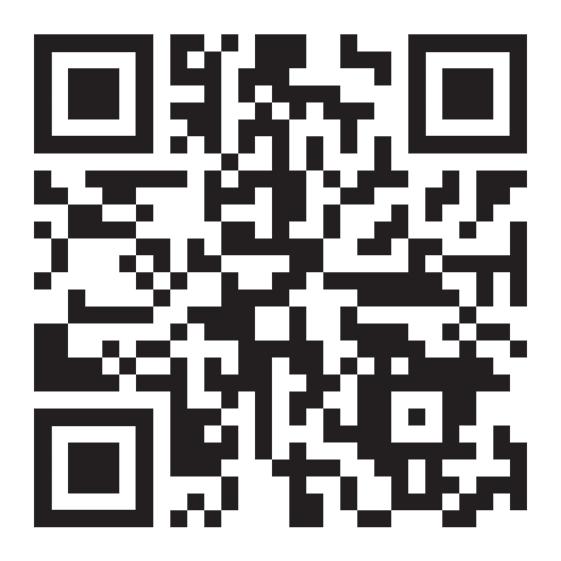
became bigger, students lost interest and Collazo felt it was time to retire. Now, being a shuttle driver offers him a piece of what he loved most about his former job: talking with the students.
Collazo decided he wanted to find a way to fill his free time after one year of retirement.
“I would drive by the garage over there on Posey Road, and that sign was always there hiring and I just decided to walk in one day and see what it was all about,” Collazo said. “They hired me that day.”
Nearly six years later, students know Collazo well and are impacted by his positive attitude every day.
Amanda Xavier, business management senior, has ridden on Collazo’s bus route for three years. She cherishes the relationship they have built and appreciates his unwavering kindness.
“Oh, he’s just such a genuine person,” Xavier said. “He’s just so passionate about what he does.”
Collazo always greets Xavier with a smile that has the ability to ensure a great day. Like most college students, Xavier has her rough days, but she said seeing Collazo puts her in a happier, more sociable mood.
“I use the shuttle every day, so I see him every day,” Xavier said. “And honestly it just like makes my day so much better.”
Xavier is set to graduate this month, and although she is excited to finish her college education, she said she is going to miss seeing Collazo every day on her way to school.
“There's going to be one day where I have, like, my last bus ride," Xavier said. "I honestly think I’m going to be really sad. He has impacted me so much and has like, brightened my day every day.”
and the different conversations he has with them.
“He’s great about like picking up a conversation six hours later after he like dropped you off and picked you back up,” Patterson said.
Collazo’s job is to get students to and from school safely and efficiently, but he goes above and beyond to always be there for the students.
“I just try to, you know, be there if they need anything, if they have a question, if they need help,” Collazo said. “I want them to know they can ask me anything. I just want to be that steady person that when they see me they know everything’s [going to] be okay.”
Not only does Collazo love his job and the students he drives, but he has proven to be an essential part to the community. Initially wanting to drive just five hours a day, Collazo voluntarily spends 9-10 hours driving to help out with the shuttle service while they are short on drivers.
“Even though this is a business, a company, I feel like I’m part of a team and I want to help wherever I can,” Collazo said. “It’s the way I was brought up.”
Collazo has won Bus Driver of the Year twice, once in 2017 and again in 2019. His award is due to his safe driving, hard work and the helping hand he is always willing to offer.
He has driven various routes, but his favorite is Holland. The short loop allows him time to get up and stretch his legs, and the students on the route treat him with kindness and respect.
"I like it mainly because of the people on this route. There's a lot of good kids," Collazo said. "Everybody is nice, polite, respectful. I've never had any issues."
Eloy Collazo, a 61-year-old Texas State shuttle driver, has touched students’ lives by offering an uplifting smile, friendly conversation and consistent support on his route every single day.

Collazo, who is nearing his sixth year with the shuttle service, retired from 31 years of teaching P.E. and health, coaching track and cross country in the San Marcos Independent Consolidated School District and decided to pick up shuttle driving in his free time.
“I look forward to getting up and going to work every day," Collazo said. "And at the end of my teaching career it wasn’t always that way. But it is now, and I really like it.”
In the later years of his teaching career, class sizes
Sydney Patterson, psychology sophomore, agrees with Xavier that Collazo offers a bright spot in her day-to-day life.
“He’s just like, easy to talk to,” Patterson said. “He literally makes my day every time I see him.”
Patterson is grateful that Collazo is one of her shuttle drivers because he offers students a sense of calmness. Patterson believes he makes every student feel safe and comfortable riding with him.
For college students, life can be stressful, especially when it’s nearing finals week and the end of the semester. Patterson values her conversations with Collazo during stressful times because he is always someone she enjoys talking to.
Collazo drives countless students to campus on a daily basis, yet he remembers the individual students
Born and raised in San Antonio, Collazo went to Ranger Junior College for two years and Southwest Texas State for two years, where he graduated. During his time at Southwest Texas State, Collazo ran cross country in the fall and track in the spring.
When he isn’t driving, Collazo likes to spend his time running, working out and playing golf.
He hopes to continue driving the Holland route and has no plans of stopping his shuttle driving career anytime soon.
“I want to drive for as long as I can,” Collazo said. “Everything is really good and great right now, and there’s nothing I can think of that bums me."
After graduating on May 11, Amber Gipson, performance and production senior, plans on taking her first step into the professional performing arts industry as she works alongside two-time Grammy award Director Joseph Kahn.
Gipson will be interning as a production assistant for the feature film that Kahn plans to direct in Houston. Kahn has won Grammy's for directing in music videos for "Bad Blood" by Taylor Swift and "Without Me" by Eminem, along with working with artists including Beyonce, Backstreet Boys, Lady Gaga and more.
Although Gipson isn't able to disclose the full summary of the film due to set confidentiality, she is ecstatic to get an opportunity that proves how far she has come, especially after going through many rocky roads throughout her college career.
"I hit a really bad slump my sophomore year of college, because I was fighting this internal struggle with myself," Gipson said. "I thought I wasn't talented, I thought I wasn't a good actress and I thought I had picked this career path and now I didn't want it anymore. I was feeling very down, but luckily, I was able to have friends that were going through the same thing as me and I was able to watch them and learn from them and we were able to help each other out."
To fully get out of that stump, Gipson co-founded the Equity & Representation Coalition for the Department of Theatre and Dance in fall of 2021. After Gipson witnessed racial disparities and misrepresentation occur within the theatre department, she felt that she had had enough.

Gipson and co-founders Brandon Doan, performance and production senior, and Ali Gutierrez, performance and production senior, felt that the Equity & Representation Coalition was also an opportunity for every theatre student to get an equal opportunity in performing. This prompted them to expand their horizons for and beyond people of color (POC).
"We make sure that POC voices are heard, but not just POC voices, people with disabilities, people of different shapes and sizes to make sure that they're not being treated a specific way because of the way they look," Gipson said. "Because I feel like we, as a Black woman, we should all be treated equally as our white counterparts out there that will get roles easily."
Yesenia Herrington, the interim head of the Bachelor of Fine Arts Performance and Production program, saw the Equity & Representation Coalition come to light and believes that it gives students an opportunity to communicate and advocate.
Herrington also worked closely with Gipson at the start of her senior year in fall 2022, where Herrington found that Gipson was fearful of her future as she had no definite plans. Now, through her work with the Equity & Representation Coalition and multiple performances, both on and off the stage, Herrington sees nothing but a bright future for Gipson.
"I admire Amber for her tenacity, for her drive and her determination," Herrington said. "When we met, graduation may have seemed like a daunting prospect. Now, she has secured the role of being on set, which was the goal. When we started, we didn't have any prospects, but look at what she has done in the process of a year. I'm just so proud of her for being active in creating her own destiny."
Gipson has participated in numerous Texas State theatre productions, some including "The Moors," "How Wren & Alucard Broke the World" and "Father Comes Home from the War."
Whether it was being one of the main characters in "The Moors" or "How Wren & Alucard Broke the World" or the assistant director for "Father Comes Home from the War," Gipson feels that no amount of experience will give her reassurance for her upcoming internship. Nevertheless, Gipson is ready to take on her next opportunity.
"I feel like no matter how much I've prepared, no matter how many sets I've been on, I'm still very scared because this is the first professional thing I'm doing
and I'm working with people in these big-name groups that we talk about in my classes," Gipson said. "But I'm ready. I'm excited to learn and that's the main thing I'm excited to do, because I know I don't know everything, but once I get on set, I'll learn more."
Linda Nenno Breining, Texas State theatre professor, taught Gipson as a freshman in a beginning acting course and again as a senior in a voice and diction course. Through those courses, Nenno Breining believes that Gipson is ready to take on new challenges as she has fully grasped what she learned at Texas State.
"She used some of the work and the techniques that we learned in class in her performances, so she has taken advantage of everything that Texas State had to offer her," Nenno Breining said. "And she was clear she was going to make it and she will."
Before walking the stage and leaving for the next class to take over the Texas State stage, Gipson wants future actors, specifically POC, to use their voice without being afraid of being heard.
"Don’t be afraid to make people angry because people are going to be angry about a lot of things, and whenever you're loud and proud and Black, it already ruffles some feathers," Gipson said. "Don't put yourself into this box that they think Black people or POC people should be in and once you're not afraid to make people angry or make people sad or make people uncomfortable, you'll be able to do anything."
For over 20 years, Dan Schumacher, a senior lecturer for the School of Journalism and Mass Communication and general manager and faculty adviser of KTSW-FM 89.9, has prepared to introduce the names of graduate students for commencement.
Once applications open for graduation at the beginning of each semester, Schumacher begins to download the lists of names to prepare for graduation. From his couch at home, surrounded by his family members, Schumacher goes over the names in order, reviews pronunciation and follows up with students who didn't provide pronunciation to be sure everything runs smoothly the day of graduation.
"I prep, you know, I just practice," Schumacher said. "I go over the challenging names and I'll do that all the way up until the time that a ceremony starts. And even while I'm sitting there before the ceremony I will be going through the list of names."
This semester Schumacher is reading around 2,500 names for five of the graduation ceremonies. Brant Freeman, a video production coordinator and commentator for Texas State Athletics, is announcing at the other three.
A year after coming to Texas State in 2001, Schumacher was appointed to be in the rotation to read names for the College of Fine Arts. In 2008, Texas State decided to do away with the rotation of speakers for each college and wanted to try to have one speaker. Schumacher was the only speaker for over 10 years until he requested to split the days with Freeman during the spring and fall as the pool of names became too overwhelming.
willingness to do so, but because of the effort and drive that he has to respect each gradates identity through the long preparation of gathering and practicing the pronunciation of names.

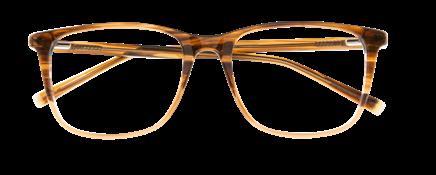
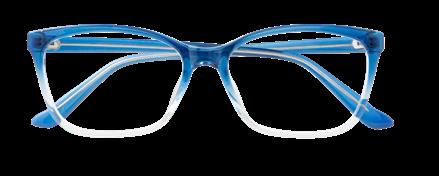
The ceremonies themselves are Schumacher's favorite part of the process. Although he believes being on the floor itself is overwhelming due to the loud cheers and having to read out loud a name every three to four seconds, witnessing students' faces and being there in that moment with them makes the vibe "awesome."
"That's the best part because there's that moment...they're queued up and you see the look on their faces on the students, the graduates, and, you know, everything's happening," Schumacher said. "Mom and dad and grandpa and grandma and brother and sisters...they're all up in the stands, ready to go, and they have signs and all sorts of different things, and it's just that rush of that moment and it's exciting."
"I did all of them," Schumacher said. "It was a lot and the university was growing and that's why I requested finally that they find somebody to help because like a May ceremony right now is 4,500 graduates, and it was just too much honestly."
Schumacher continues to read at commencement, not only because of his
Schumacher is ready for commencement. He uploaded all of his final edits for his graduation dates this past week on Sunday evening. He looks forward to seeing students walk the stage and to begin to prepare for the summer graduate ceremonies starting in June.
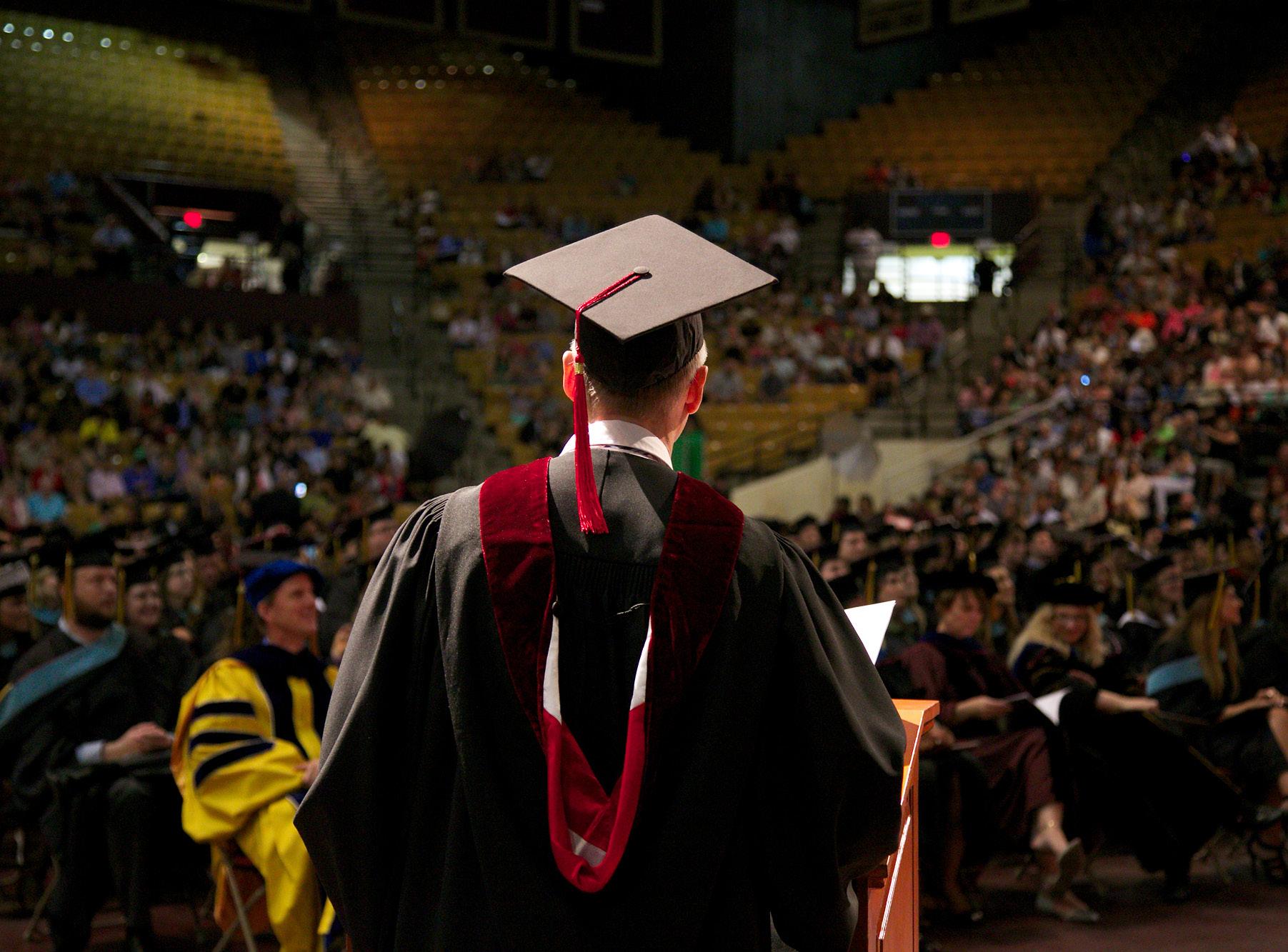







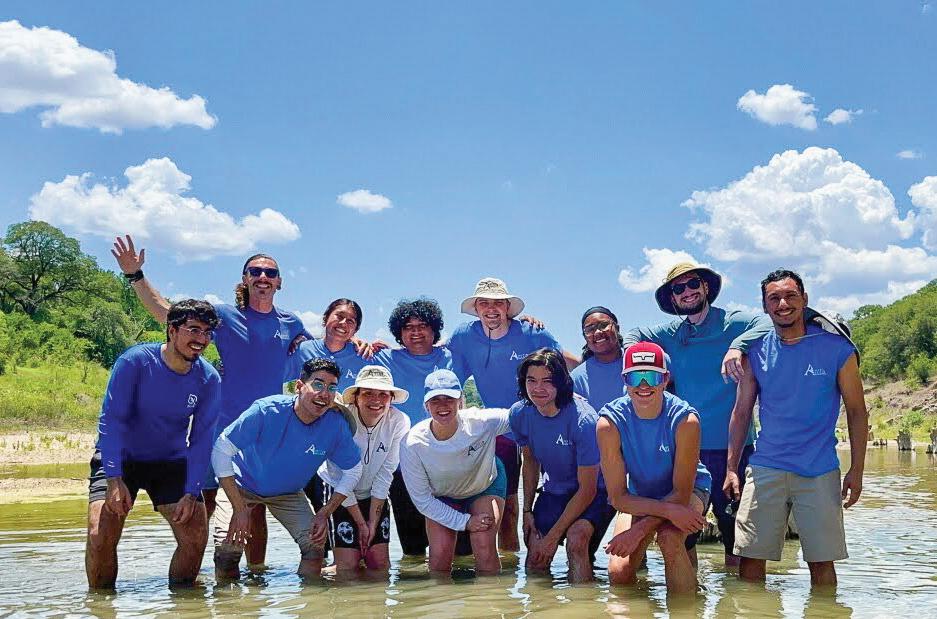



Opinions in The University Star are not necessarily those of our entire publication, Texas State University’s administration, Board of Regents, School of Journalism and Mass Communication or Student Publications Board.
This year, we introduced a process that had each section editor designing their section’s pages; Marisa designed the Life and Arts pages, Dillon designed the Opinions pages, etc. This is how every paper since the end of the fall 2022 semester has been designed, but it took a lot of adjustment. Only a few of us were familiar with InDesign and we ran into problems with sending our paper to the printing press. One production day, we didn’t leave the newsroom until 3 a.m.
This past semester, we welcomed assistant editors to our team and taught them everything we learned so they would be well-equipped once they took over our positions. We’re proud of how quickly they have adapted to their new roles, which they officially stepped into on May 1.

Many of us stepped outside our comfort zones when we covered an election, or as the news editor Nichaela called it, the Super Bowl of news. We wrote briefs and monitored results for local elections. Much like other portions of the job that may have fallen through, we adapted together and divided up new work as needed so we could serve you, our audience.
This year, The Star won awards at the Texas Intercollegiate Press Association (TIPA) in Fort Worth, Texas, and at the National College Media Convention in Washington D.C.
We don’t do what we do to win awards, though. Our jobs are not easy. From week to week, we do all the work that goes into any weekly newspaper while still balancing homework, assignments, exams and projects.
From burying our newsroom fish, Electro, to changing our editor-in-chief Arthur Fairchild’s hairstyle, these moments unique to our team are special memories that we won’t forget.
As we reflect on the last year, we realize that the obstacles we overcame only proved to us why The Star is one of the best student media organizations in Texas.
Of the many unique reasons an institution may be involved in a legal battle, claims that the institution has violated the U.S. Constitution easily attract attention. Due to the nature of these kinds of lawsuits, it can be difficult to prove a violation in front of a judge; however, this has not stopped three anonymous Texas State students.
These students have filed a lawsuit against the university with the help of Speech First, an organization that works to protect the first amendment on college campuses. According to a press release presented by Speech First, the university is being challenged on two major policies: Texas State’s discrimination and computer policies. Speech First’s Executive Director, Cherise Trump, claims these policies to be in violation of both the First and 14th Amendments due to either the policies’ vague language and perceived overstep into the rights of students.
Trump stated that Texas State has ultimately "forced students to optout of classroom discussions," leading conservative students to choose not to speak up out of fear that "they may be accused of harassment for 'offending' someone."
Taking a closer look at these policies tells a slightly different story, as simple semantic issues with the text of the policies are insinuated to have a nefarious agenda or easily-exploitable flaws. The first policy that Speech First takes issue with is the university’s discrimination policy.
According to Speech First’s complaint, Texas State’s current guidelines for discrimination are too broad as to not infringe on the first amendment rights of students. However, the policy itself remains quite narrow in what the university considers to be punishable harassment or discrimination and not protected speech.
In accordance with standing federal anti-discrimination laws, Texas State’s discrimination policy makes it clear what constitutes punishable harassment is speech severe enough to directly inhibit a member of a protected class's ability to participate in on-campus programs. It also states an extensive list of exceptions in which the policy would not apply.
The second policy that Speech First and the students take issue with is the Texas State informational resources policy. In the complaint, the university is accused of suppressing protected speech by prohibiting the usage of campus-affiliated materials for political purposes.
This accusation stems from the language used in section 05, regarding inappropriate usage of electronic resources. The lawsuit takes issue with the prohibition of using information resources affiliated with Texas State to influence democratic elections of any kind, as well as to “...achieve any other political purpose.”
On Texas State’s policy website, the guidelines regarding political activity on university-affiliated resources are part of a large list of other prohibitions for usage. In the first sentence, the line “These and similar activities are strictly prohibited for all users” is used to encompass the following 23 prohibitions, one of which is the guideline on political activity.
Speech First takes issue with the concept of “similar activities” being used to stifle conservative speech and claims that students are prohibited from engaging in protected political speech via their school email accounts. This is not stated in nor easily interpreted in good faith when reading the policy.
Despite these factors which potentially could detract from the lawsuit’s arguments, there is legal precedent for judges on similar cases to rule in favor of the plaintiff. Speech First recently won a case presided over by a Reagan-appointed judge to permanently revise a University of Houston discrimination policy.
Given there are cases in the past that point to support of the perspective of Speech First and the anonymous Texas State students, a judge could rule in their favor. In the event that Speech First and the students' actions result in changes to these Texas State policies, students of minority groups will have less protection against harassment from fellow students, professors or staff.
-Kien Johnson is a sociology freshmanThe University Star welcomes Letters to the Editor from its readers. All submissions are reviewed and considered by the Editor-in-Chief and Opinion Editor for publication. Not all letters are guaranteed for publication.
We leaned into change and realized the team effort it took to produce something we could be proud of every week. We’re proud of ourselves for how our hard work paid off.
Together, we have grown as young professionals and have aided in the growth and interpersonal development of The Star
At the end of our current configuration, we can say The Star brought us more than joy and work to be proud of, but family.
Thank you for picking up our paper every Tuesday when it hit the racks. We grew, laughed and left our mark.
Student journalists are often sidelined and thought of as “lesser than” when it comes to comparisons from those on the outside. The reality, however, is that student journalists play a bigger role in the journalism world than some may think and it is important to begin paying attention to them now.


News deserts, a growing problem in the country, can be described as any community with limited access to reliable news and information. According to the Washington Post, these deserts leave residents “ignorant of what’s going on in their world.” Without proper news sources, false information can spread and people are less inclined to participate in important discussions. In Texas alone, there are 21 counties without a newspaper.
While student publications already play a vital role in campus culture by keeping students up to date, they have also begun to step up and fill in the gaps created by news deserts. By covering things like local elections and issues, university newspapers provide surrounding communities with information they might not have been able to receive otherwise.
According to The Conversation, the number of full-time statehouse reporters dropped 6% from 2014 to 2022. Despite this decline, university students once again filled the gap and now make up about 11% of state capitol reporters in the United States. Student media has a growing presence in the country and shows no signs of disappearing anytime soon.
Throughout the past few decades, newspapers across the country have suffered steep job losses, further contributing to the problem. According to Pew Research Center, U.S. newsroom employment has dropped 28% since 2008. These newsrooms have been forced to rethink the way they go about presenting their work to the communities surrounding them, often turning to an online-based approach.
Student journalists are not strangers to the problems facing newsrooms today. Many college newspapers, including The Ranger at San Antonio College, have been forced to go fully online or shut down completely due to budget cuts. Though these issues are very real, they don’t signify the end of student journalism. Instead, they teach students how to quickly adapt to what is happening in the world around them.
To continue reading this column scan the QR code to be taken to the Opinions tab on The University Star website.

Within the city of San Marcos, Texas State is arguably its own community. It has three separate dining halls, its own form of government, health resources for students, a fully equipped recreation center and its own police force.
Without the work of The University Star, there would be no uniform way to keep students up to date with all that goes on within the Texas State community. In addition, The Star also acts as a check on university officials by holding them accountable for their actions. The Star is an important resource for all Texas State students and it should not be taken for granted.
Working for a student newspaper places aspiring journalists one step ahead of the game. At these papers, students learn how to effectively communicate their ideas and they gain the skills necessary to know what goes into publishing quality work.
Those who work in student journalism might soon be the same people who work at nationally recognized publications. Pay attention to their voices and pay attention to the stories they work so hard to provide because that passion is something that deserves to be known.
-Rhian Davis is a journalism freshman
I think the first time I thought I knew what being a journalist meant was some odd May day when 18-year-old Sam sat in a student government meeting from 6 p.m. to around 3 a.m. that morning. I had sat in that lecture hall for about eight hours with my phone in my shaking hands and my bleary eyes falling asleep as the student senate argued for eight hours.

Eight. Hours.
And let me be frank, I was not having a great time during those eight hours.
It was sort of the tipping point of a semester of insane thoughts. I thought I wasn’t cut out for the job at that point. Truthfully, I wasn’t sure what I wanted at 18. I thought that one thing I knew for sure though was that I did not want to be a journalist.

… Clearly. You can tell by me writing this that that didn’t last forever. I joined again my last semester. No one was surprised.
As I write this, it has been five years since that May day. I have been sitting with myself for longer than I should be on this -- wondering if I deserve to be writing one of these when I had left The Star three months before the dreadful COVID-19 hit.
I began my Texas State career at The Star and fittingly enough, I ended it with The Star. I had always made my biggest accomplishments as a news reporter from the beginning to the end. I have put my blood, sweat and tears into my stories. I spent long hours talking with many voices that shared their stories with me in confidence that I would take care of them. I have never stopped writing. I have never stopped hoping.
And let me tell you -- I have never been taken for granted amongst those walls of Trinity. Every effort I gave has been seen and every smile meant the world to me.
And that’s what journalism is to me now.
To my first editors, Sandra and Sonia, thank you for seeing something in that bright-eyed freshman. You two showed me what it means to be a reporter in both practice and personality. And thank you to Nichaela, who gave me the chance to show how much I have grown. Thank you for never failing to come into our weekly meetings with the most contagious smile and the most impeccable work ethic I have ever seen. And Blake, you are going to be amazing and I am so impressed by everything you do already. I will never forget you two or the wonderful team you built. And to Krantz, thank you for making me cry at both eighteen and twentytwo with your praise.
And lastly, to my family and friends. Thank you for always believing in me. Thank you for celebrating every byline. I give you this last one under The Star's name. I hope to give you many more in my next adventure.
My time here at Texas State has really changed me as a person. It has not only pushed me beyond my limits but also taught me something important...patience. Growing up I was always in a rush to do things. In traffic, at the store, waiting in line, anything that made me wait caused me to get mad or annoyed. I had no patience coming here, but now I feel like I can wait as long as I need.

I know I didn't start working until last semester at The University Star, but I feel like I've been here for years. The work and time that I put into my stories is something I will never forget, and the experience will help me for my future career. I don't know what the future holds for me, but I know I have great patience now to figure it out. I don't settle and I strive for the best in what I want. I no longer am too short on time that I can't wait for things and settle for whatever is in front of me.
Patience is a great thing to understand in this world, and good things don't just happen over night. I always stay optimistic and know that if I didn't get the job, or didn't get that approval, then it wasn't meant to be. The University Star has taught me a great deal about patience with waiting to hear back from a potential interview or some data that I needed for a story. There were weeks where I didn't hear back from a interviewee until the last minute, but it always worked itself out in the end.
I cannot believe that the time to graduate has already come, life really comes at you fast. I thank The University Star for helping me not only in my story writing but also my perspectives on life. The people that I met for stories and the emotion that they had behind them really taught me to be grateful for what I have. To those that have been in my life to see me grow and motivated me to become the best version of myself, I am grateful for you, and I thank you.
Degree: Masters of Fine Arts in Creative Writing




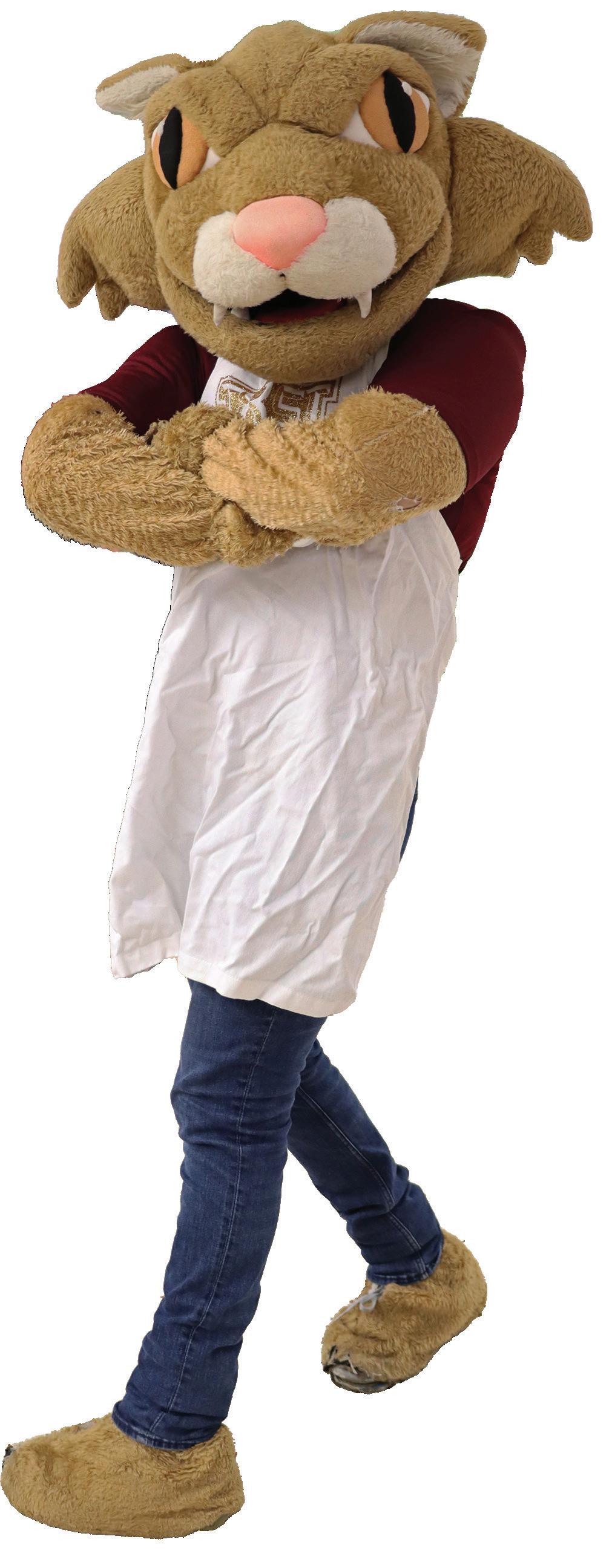
Kayla,



We are all so very proud of you. Your commitment has never wavered, and your talent is shining through. Your accomplishments are already impressive, and only beginning. You are already making a difference in your students lives as well, the sky is the limit for you.
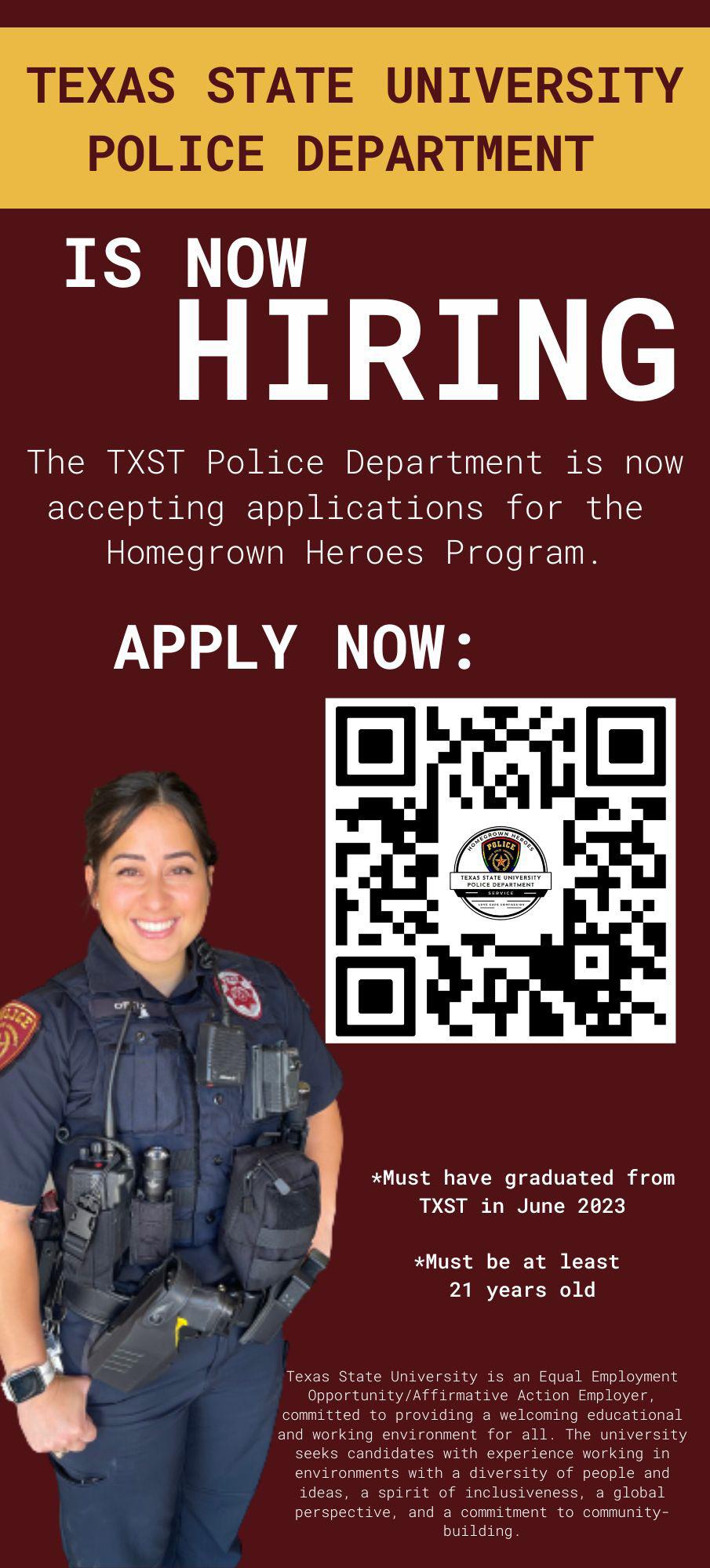


Mom, Dad, Rob, Maggie, Jaiden and Layla

I have always been a sports fan. I love the competition, the energy of live sports events, the heckling from the crowd and attending the events with my family and friends. One of my earliest memories is attending a Texas Rangers series with my family back when they had Josh Hamilton, Michael Young, Nelson Cruz, Ian Kinsler, etc. We were playing the Boston Red Sox, who also happened to be my childhood best friend's favorite team.
Both of our families went to the game, sticking to our yearly tradition of attending a Rangers against Red Sox series and going to Humperdinks for happy hour before heading to the stadium. Humperdinks was our favorite restaurant and bar in Arlington prior to it sadly closing during the pandemic. It had the best calamari I have ever had in my life with a perfectly sweet and spicy chili sauce that went with it. They also had these amazing mousse deserts that were so creamy and addicting, it was so hard for me to decide what flavor I wanted every time I ordered it.
Humperdinks was always our version of a warmup before the game. We would talk about the players to watch, what to expect from the game, what snacks we were going to get and, of course, who we thought would win. Once we finished up there, we would hop on the shuttle that would take us directly to the front gates at Globe Life Park. Once inside our routine was always to find our seats, then go get food and drinks, walk around the park and, finally, sit to enjoy the game once it started. We still do that for all the games we attend to this day and it's a great way to see the whole stadium and explore all the different shopping and food options.
I remember being able to see my friend and her family from across the field as we were on each side of home plate in the second deck of seating. The crowd for the game was phenomenal. Everybody had high energy and they were ready for a good game between the Rangers and the Red Sox. At one point, I remember it looked like the entire crowd was standing as the Rangers were up to bat and Hamilton coming up to the plate to hit an absolute bomb of a home run. I haven't been in a crowd that excited and loud since then, not even when my high school football team advanced to the state game and beat the state champions from the year prior.
I was giddy with happiness for the rest of the night after watching an amazing game and having such a great day with my friends and family. Sports have always been a way for us to bond and a form of entertainment that we all enjoy, so getting the opportunity to write about all the different sports I love for The Star and talk about them with other writers and sports lovers has been one of the best experiences.
I learned so much working for The Star, from how to properly write about sports for an article, to communicating efficiently with the rest of the writing staff,
to being able to speak to people I have never met and ask them questions about themselves, which would have made me feel awkward prior to and finally, I grew a deeper fondness for sports in general by working with so many others who are passionate about the same thing I am.
In the last semester of me working at The Star, I was promoted to sports reporter from sports contributor, and I was even going to be given the opportunity to be a co-editor in the fall if I wasn't graduating this semester. I never expected to have this opportunity, much less be shown so much appreciation from David and Carson, who are only the best editors around and who have taught me so much about what it's like to be a journalist.
I have loved sports all my life and I am so thankful that I got the opportunity to write about them with such an amazing sports staff. Thank you University Star, I will miss you so much.
Growing up, I always wanted to write about sports. I remember the first sports game I ever watched on TV, the Dallas Cowboys were playing the Tampa Bay Buccaneers. My family was gathered around the TV, they were so happy, so excited and most importantly, all together. I enjoyed the atmosphere sports created and how it seemed to bring everyone together in a way that most things couldn’t. Even as a child, I knew that this was the world I wanted to live in.
My first “published” work came via a sports blog I created for my FDOM class here at Texas State. I was so proud of that work and still am. It marked my first step toward a lifelong dream. However, that was just the beginning. I knew at some point I would have to join an official publication, but I must admit, I’m naturally introverted and have a tough time putting myself out there.
I was never in Newspaper or Yearbook in high school or anything like that. I had other people read my work, but never on a public scale. I feared that I wasn’t good enough, that no one would care to read what I wrote, that I was uninteresting or unprofessional. However, I soon overcame my introverted nature thanks to some encouraging words from my News Writing professor Holly Wise.
During our class, she asked us if any of us had real aspirations of becoming journalists. I spoke up and explained my passion for sports and she quickly recommended that I apply to The Star. Her words meant so much to me, especially how quickly and excitedly she said them. I genuinely felt that she enjoyed my work and that gave me the confidence I needed to move past my inner anxieties and toward something that I am so glad to be a part of today.
I joined The Star in November of 2021 and quickly realized how silly I was for being so intimidated. The Star wasn’t the cut-throat, cold-hearted, scary place I imagined. The Star is filled with students just like me trying to make something of their own in this world. Everyone I’ve met at The Star has been so kind and understanding, it truly is a blessing to have my first newspaper experience with a group that is as empathetic and encouraging as they have been.
I want to give a special shout-out to my first editor Brianna Benitez. She was the editor-in-chief when I started and was the pseudo-sports editor because we didn’t have an official one at the time. I was so grateful to have her as my editor because she was incredibly accommodating, which I know must’ve been hard as a senior with two editing positions. I couldn’t have asked for a better introductory experience and have her to thank for it.
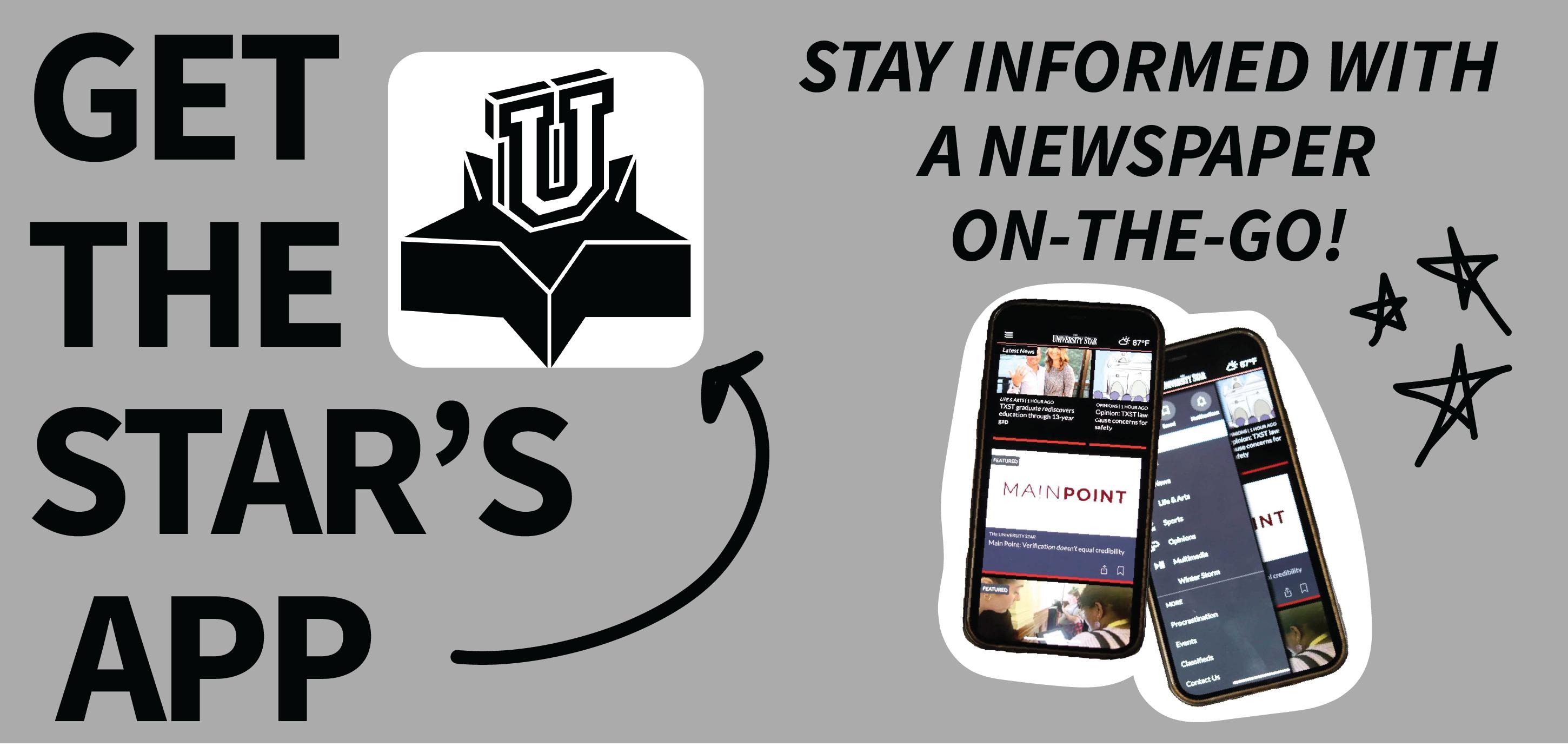

Since then, I’ve had a great time writing work that I know people will read and enjoy. I take great pride in being trusted and able to tell other people’s stories. Interviewing, getting to know someone and really being able to bring light to what
they have to say is something I’ve been very proud to do. It really is a privilege and one I don’t take for granted, so after four years at Texas State and a year-and-ahalf at The Star, I can finally say: thank you.

As a nontraditional student, graduating high school in upstate New York, going to community college in northeast San Antonio, commuting my first academic year and making my way to Texas State was isolated. Forming bonds at a large state university further from home than most has a lot of different routes.
But as a journalism student, I picked up a student newspaper, The University Star, as I was curious to see its content. After flipping through stellar stories, I found an application ad and was encouraged by my mother not to wait for the opportunity to pass.
After applying for the sports and opinions sections and going through an interview with former Editorin-Chief Briana Benitez and opinions editor Hannah Thompson, they both thankfully offered positions in both sections while acknowledging all that's possible at the publication. Likely setting myself up for lofty goals that I could not reach, I formed accomplishments I would have never imagined.
Eager for the opportunity, I covered the 2021 Sun Belt Conference men's basketball champion Texas State Bobcats season opener on one of my first days, traveling to San Antonio to cover it in person. My recap of their victory was the first thing I got to see of my own in print. The following week I wrote a column about the university offering more hybrid classes, which also made it into the paper.
Professional experience in student media is what I was ecstatic about getting to experience at the beginning of my time at The Star, but forming relationships with colleagues and subjects is what came unexpectedly. After being a contributor and columnist, I got thrust into the role of editor for the opinions section.
Again, not weary but rather eager, I made my first few hires via Zoom over Christmas break while with my first family in Rochester, New York. One of those hires was my first assistant editor, Tiara Allen, who I could depend on like no one else. Leading weekly section meetings felt less like a meeting and more like catching up with friends while sprinkling in notes from common editing mistakes I would see and talking through content ideas.
The opinions section in meetings always brought lively conversations after icebreakers like Halloween candy tier lists and playing GeoGuessr; we even built gingerbread houses. Then, after encouraging the section to get out of their comfort zone and write about unfamiliar topics, we reined in. We talked about local issues, hoping to bring light to topics unfamiliar to the public and inspire change.
What I enjoyed even more at The Star than the brief good times I had in the Trinity building conference room once a week for the opinions section
was the newsroom. The editorial board was made up of characters all different from one another and created a culture unlike any other, especially on production days and on a long election night.
With the paper coming out every Tuesday, with some exceptions, the desks were lined with student editors all day prior, some, unfortunately, longer than usual. Creating banter between colleagues turned friends that, for me, included throwing around a squishy replica Aaron Judge ball to mostly pass the time with former Editor-in-Chief Arthur Fairchild, former sports editor and current Editor-in-Chief Carson Weaver along within anyone else with their attention in our vicinity.
I have too many shared experiences with the editorial board to share, but being in a safe space like The Star, creating memories while also producing a newspaper, and manufacturing new challenges that I am better prepared for is all thanks to them.
Sharing stories about the Texas State Fencing Club's big tournament victory, columns about campus issues, taking pictures at softball, baseball and basketball games and even covering an appearance by Vermont senator Bernie Saunders at Sewell Park are
just a few of the times I got to do something I would have never done.
More consistently reporting on college athletics and sharing my thoughts in the opinions section for a community newspaper, I will forever be grateful to The Star for the freedom and space to do so.
But not only could I do that, but I could create unique friendships. After another round of hires beginning last semester, I found the subsequent opinions editor, Rhian Davis. Along with the new editorial board taking over, I am happy with our times and excited to continue reading the paper and see what the next wave puts out next.
Thank you to the entire staff, the illustrators that brought opinions columns to life, our director Laura Krantz and my family for the support during my time as a journalist at Texas State, along with anyone who ever gave me their time to speak with them for an interview and everyone who ever picked up a paper or went on our website to read.
Texas State journalism senior Dillon Strine poses with The University Star table at a recruiting event, Monday, Aug. 29, 2022, at the LBJ Ballroom.

Growing up I always loved writing. I had piles of notebooks filled with fantastical stories and tales of faraway places. I’m not much of a writer anymore, but I could fill a novel with everything I’ve learned, experienced, and accomplished in the past four years.
An old passion for writing led me to dream of becoming a journalist one day. (Ever practical, I knew I would never make it as a novelist.) As I ended up finding my fit in public relations, I never actualized that dream, so here’s my debut and subsequent goodbye.
Over my life, I’ve struggled with anxiety so coming to Texas State was a huge step for me. I lost a lot of confidence in my first semester, but I knew I
was in the right place when I changed my major to public relations and applied to work at The Star. My time here brought me back out of my shell. I saw so many strong young women in leadership and, even when I was just a PR assistant, I felt empowered to step up, do the work and lead.
There is one goal I stress for each and every person that joins the PR team: I want them to walk away having learned something. How special is it that we, as mass communication students and growing professionals, get to work together to build each other up and grow?
So to conclude my time at Texas State, I’d like to share a few lessons I’ve personally learned here: Do things that scare you. Don’t be afraid to be yourself. Give yourself grace. Lean on others. Find the things

and people that make you happy and hold them close.
Everyone walks away from student media with something different. For me, The Star is about collective growth. It’s about the power that students have. To be able to be a part of something as impactful as The Star, telling the stories of a community we love so dearly, is something I’ll hold close to my heart for years to come. I’ve spent two years watching everyone pour their hearts and souls into that very mission. While I was never cut out to be a journalist, I’m inspired every single day by those that surround me.
As the sun sets on my time at The University Star and Texas State University, I recognize that this journey wouldn’t have been possible alone. Thank you to my parents for being my number one cheerleaders. Thank you to my PR team and to my assistant director, Abbie, for bringing so much creativity to the table every week and always making me laugh. Thank you to the Star Stories speakers that trusted me with their stories. Thank you to the 2019 Laurel Hall residents that I now call my best friends, life wouldn’t be as sweet without you.
And one last special thank you to the first-class leadership at The Star that I had the privilege of working alongside, I’m so excited to see what you do next. I will always look fondly upon the memories of us laughing in the newsroom, coming up with insane icebreakers, and talking on the rocks in the middle of a river in Wimberley.
I often shed a tear for my past self as I know that today I am everything she prayed she would become. I am so much more than my anxiety or what people think about me. No longer do I have to keep my head in a book and keep to myself and I largely thank The Star for that.
The projects I’ve been a part of at The Star and Texas State, from contributing to Main Points to planning large events, have been so gratifying. I am proud of everything I’ve been lucky enough to be a part of. I may sound overconfident, but I think I’ve more than earned the bragging rights.
I find the idea of a Senior 30 somewhat odd. 1,000 words or less to sum up four years of my life is not nearly long enough to describe my time at The University Star or thank the endless amount of people that deserve recognition for helping me on my journey. Nevertheless, before the end of my farewell, I will hope to accomplish those two things.
I’ll start on April 2, 2022, the day I learned that I had earned the position of Editor-in-Chief and funnily enough, my birthday. When I received the news, I was thrilled but understandably nervous. I knew the issues The Star faced, and I knew I couldn’t solve them alone. I immediately hired the talented Sarah Hernandez, the former life and arts editor, and a much better copy editor than myself to be The Star’s managing editor.
The most pressing issue at the time was creating a culture in the newsroom and finding a way to make brutal 12-hour-long Monday production days something that editors and staff would look forward to. The paper’s adviser, and someone I now call a friend, Laura Krantz, arranged Camp Star. A three-day camping trip with editors where we would workshop ideas about the paper, be visited by guest speakers, spend time together learning our strengths and weaknesses and more than once getting stuck in shallow waters in kayaks.
When we returned to the newsroom, I made attending in-person meetings mandatory. I recommended that staff study and hang out in the newsroom even if they weren’t doing anything work-related. We also got dinner and drinks and watched sports and movies together. The culture we had created reached its culmination a few weeks ago at the TIPA journalism conference. Something that could have been a regular work event felt like the Super Bowl, with editors and staff working together like a well-oiled machine.
Throughout the year not everything I tried, or my team tried, necessarily worked. One aspect of student journalism that I love, and support, is the freedom to experiment. I like the idea of having the freedom to try new things and if they work, great, but if not try something else until it does. On the print edition, I experimented with more ideas that didn’t work than did and encouraged editors not to be afraid to try new things.
A successful goal of mine was to streamline production days. Before I was Editor-in-Chief, Monday production was a time-consuming 12-hour affair, where editors and reporters would turn stories into be edited and they would be set on pages by one person, the design editor. The design editor would then sit at their desk and lay out every single page. This led to burnout and an unnecessary bottleneck in production. The solution was to have editors learn how to design their own pages thus removing the bottleneck. The role of design editor, currently held by the excellent Sarah Manning, works as a creative designer, designing the front page with the extra time helping other editors to reach their creative goals for each page.
As an editorial board, we wrote main point editorials almost monthly that expressed our opinions on controversial national issues and related them to our
local audience. The editorials covered topics such as gun violence, protecting the first amendment, the importance of student’s voices and many more. I’m proud of our main points and the conversation they stirred among our readers.
I would like to list a few people at The Star that helped me and the paper during my years at the Trinity building and The University Star. Thank you, Laura Krantz, Caitlin Mitchell, Brianna Benitez, Jaden Edison, Jakob Rodriguez, Daniel Weeks, Sarah Hernandez, Nichaela Shaheen, Carson Weaver, Dillion Strine, Marisa Nuñez, Sarah Manning, Elle Gangi, Vanessa Buentello, Zaria Jackson, Jeffrey Halfen and Madelyn Weirich. There are dozens more people that need to be thanked including former and current staff and my family and friends that helped me during my time as Editor-in-Chief.

I am immensely proud of my team and the years we spent together making The University Star one of the best student publications in the country. I am sad to say goodbye, but I am excited for what’s ahead for myself and my team.
Texas State journalism senior, former news editor, former Editor-in-Chief , current University Star advertising executive and bad golfer Arthur Fairchild poses for an Instagram picture after being selected to be the Editor-in-Chief for the 2022-23 school year, Tuesday, May 3, 2022, in the Trinity building conference room.
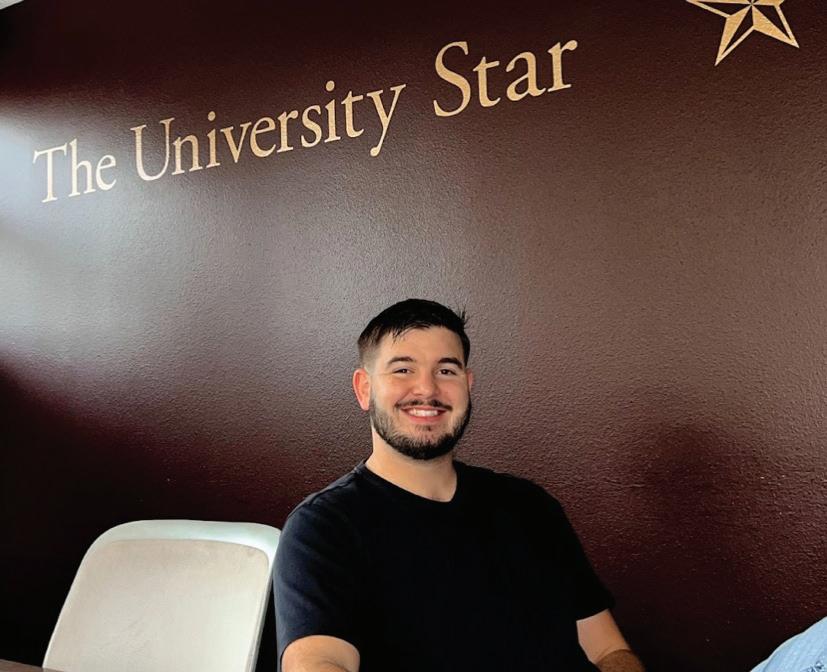
Joining The University Star was the best decision I ever made in college.
I submitted my application to the life and arts section on the day they were due in May 2020. I can’t remember what prompted me to do something that seemed so brave considering how shy I was then. I don’t think I knew what I was getting myself into. I had just moved out of my dorm in Tower Hall after spending two weeks at home for spring break because of COVID-19. I think I wanted to get more involved on campus since the only times I ever left my room were to go to class or cross the street to get Panda Express for dinner again.
My mom tells me she and my dad were shocked when I told them I applied to write for the school newspaper. I was a quiet person (even quieter than I am now) and it was difficult to imagine that timid girl doing the job of a journalist.
I remember the nerves I felt before conducting my first interview. It was over the phone, and I was sitting on my bed at home. I probably said “um” way too many times, and I remember cringing at the awkwardness of saying goodbye and hanging up, my hands shaking as I texted my cousin that I was glad it was over.
Writing my first story and seeing it published on The Star’s website was the coolest accomplishment. Early on in my time as a life and arts contributor, I continually surprised myself with the work I was doing. I interviewed John Quiñones after his Common Experience lecture and wrote feature stories about beloved Texas State community members and the freshmen who were about to move into their dorms during the height of the pandemic.
Beyond the work, I loved being part of the life and arts section. Our all-girl team bonded over our love for Harry Styles and pop culture at weekly Zoom meetings.
I looked forward to virtual all-staff meetings and socials. I didn’t know everyone else that well, but I had so much fun staying on Zoom for hours to playing Jackbox games or listening to presentations during our PowerPoint party like the one on why “Cats” was actually a good movie.
The Star has been the catalyst for a lot of my personal and professional growth. Being the life and arts editor challenged me in ways I didn’t think it would. For the first time in my life, I was leading a team that depended on me. I was trying to meet the expectations of a weekly newspaper, and I was only 19-years-old. I doubted myself a lot.
My time as the managing editor was a time of more learning and self-discovery. I took on a bigger responsibility and the task of helping lead The Star back to fully in-person operations. I discovered more about what it meant to be a good leader and editor. I also became friends with some of the best people I’ve met in college: the 2022-23 editorial board.
In January, I started keeping a list of my favorite memories with the e-board in my notes app. Some of them are big memories like the traveling I got to do with The Star, but the ones I love the most are the smaller ones like waking everyone up to watch the stars on the last night of Camp Star or running laps around the newsroom on Election Night to wake ourselves up.
It’s difficult to say goodbye to The Star, especially after the year I just had. I’m going to miss my walk to Trinity and my weekly pickup of the new issue to add to the stack of newspapers I’ve been building since January 2021.
I can only appreciate everything this organization has done for me and be proud of all the work I have put into it.
The job of a student journalist is not easy, but if I could go do college all over again, I would still pick student media to call my home.
When I joined, I never expected to travel to Washington D.C. with The Star and have my full-circle moment of meeting John Quiñones again, this time in person, at Media Fest 2022. I didn’t think I would place in a copyediting contest at a college journalism conference or dedicate my Mondays to 13-hour workdays to make a newspaper.
I certainly did not think I would get to the point where I would be writing this much about what The Star means to me. Freshman year Sarah who was so anxious about finding her place in college would be so proud of who she has become.
I tend to underestimate myself as a journalist, editor and leader. I would not be writing this Senior 30 if not for the support, encouragement, kindness and love that The Star and the people I have met here have shown me.
From my first editors at The Star who welcomed me and believed in me to my friends on the 2022-23 editorial board who made my senior year so memorable, thank you.
Thank you, Carly and Jake, for saying you read my latest article when I knew you hadn’t. That’s what siblings are for, though, right? I know y’all were cheering me on, and I hope I made you proud.
Thank you, Mom and Dad, for supporting me through it all. For listening to me complain and cry when I had two feature stories to produce in one week, for sharing the link to every article I wrote on Facebook and for not doubting me when I told y’all I was going to be a journalist for my college newspaper.
If I’ve learned anything from my experience at The Star, it’s to welcome new opportunities with open arms. I’m sad to leave, but I know I’m well-equipped for my next endeavor. The experiences, the memories and the friendships I’ve made here are ones I’ll cherish forever.
Thank you, Star.
Following years of sustained excellence, Texas State baseball is ready to take the next steps in becoming one of the NCAA’s elite programs beginning with its stadium.
On April 10, a $1 million gift was donated to Texas State as part of its proposed $8 million privately-funded expansion project of Bobcat Ballpark. The donation was given by Tyler Sibley, a Texas State alumnus and former AllAmerican second baseman.
The expansion project will not only expand the seating capacity of Bobcat Ballpark but also significantly upgrade the quality of the team’s facilities. New features include three full-sized indoor batting cages, a fully air-conditioned pitching laboratory, a locker room and game day lounge for both the baseball and softball teams along with several other amenities.

Head coach Steven Trout believes the expansion project will have a seismic impact on his program moving forward.
“It’s humongous for us,” Trout said. “In the day and age in college athletics it’s all about the facility race and trying to get bigger, better and newer. A lot of it is necessity. We’ve needed bigger [batting] cages for a while. The pitching lab is a new technology type thing. Of course, the locker room at the field will be a huge piece. We’ve got some great facilities right now but that’s just going to take our program to the next level.”
According to Texas State President Kelly Damphousse, upgrading the facilities for both the baseball and softball teams was paramount.
“Right now, our softball and baseball players have to get dressed in the UAC then carry their equipment to the baseball or softball park," Damphousse said. "We want there to be locker rooms right where the park is and to enhance the practice facilities as well.”
Freshman baseball catcher Rashawn Galloway and freshman baseball infielder Chase Mora, both of whom recently experienced the collegiate recruitment process firsthand, said they believe the new facilities will impact Texas State’s recruiting efforts for the better.

“A lot of what you see in your recruiting process is [the coaching staff] showing you the field, the locker room, what they have to offer and just kind of pitching their case to you on why you should come here,” Galloway said. “A lot of the kids, as they grow up, they see the facilities, they see the uniforms, they see everything that we have. That’s what attracts them initially. So having this establishment built is just going to take our program to that Power Five level that we believe we are.”
Mora said the facilities will make Texas State more competitive on the recruiting trail, allowing the team to compete against more renowned programs for bigger named high school prospects.
“I think these new facilities can take this place to the next level,” Mora said. “Get those bigger commits. Guys who are overlooking our program right now and not really understanding what we’re all about here. Once they understand we’re going to have Power Five facilities, this place can go somewhere really big.”
According to Galloway, the facilities will also be immensely beneficial, not only for incoming players, but players currently on the team.
“I know as soon as this thing is built, I’ll be in there 24/7. Probably won’t even be at my house that much just because it’s going to be so cool,” Galloway said. “Getting to bond with your teammates in such a cool locker room. Going to have a pitching lab, going to have [batting] cages. There’s going to be a lot of hanging out areas. Just team bonding. We already have our team bonding a lot in the locker room that we have now and I just can’t imagine how much elevated that can be with the place they're going to build.”
The expansion will not only accommodate the players but also the fans. There will be an increased number of stadium seating and field boxes, new box offices for both baseball and softball and an indoor hospitality lounge deck overlooking left field.
According to Damphousse, increasing the number of seats for fans was one of the biggest priorities.
“We just can’t seat everybody in there,” Damphousse said. “At a recent game, we had people standing in the softball seating area peeking over watching the baseball game... there’ll be enhanced seating both in the quality of seating and quantity of seating.”
The players anticipate the increase number of fan seating will make the atmosphere at Bobcat Ballpark much more electric on game day.
“It’s one hundred percent going to boost the atmosphere,” Mora said. “Even with the smaller teams we play I feel like there’s still going to be a huge turnout with the newer facilities. And then when Texas or TCU or any of the bigger teams come in it’s going to be unbelievable.”
Currently $1.5 million has been donated to the expansion project following the most recent donation of $500,000 made by Texas State alumnus Chris Rasmussen.
Damphousse believes the athletic department will not have any difficulty being able to raise the remaining $6.5 million needed to complete the expansion project.
“I think once you receive the first gift other people get motivated to give,” Damphousse said. “And once you start building people say ‘okay I want to put my name on this’ and so on. So, part of the funding strategy is to provide options for people to put their names on certain things. So, you can put it on the locker room or on the seating area."
Since joining Texas State as freshman in 2018, graduate guards Kennedy Taylor, Ja’Kayla Bowie, graduate center Jaeda Reed and graduate forward Da’Nasia Hood have all competed in nearly 100 games as Bobcats.

It’s not often a collegiate athlete of any sport completes a four-year career at the same school, and these players polish out five seasons after being granted an extra year of eligibility due to the COVID-19 pandemic.
A total of six graduate students complete their fifth year of eligibility after the 2022-2023 season, but Hood, Taylor, Reed and Bowie managed to complete all five years wearing a Bobcat jersey together.
Head coach Zenarae Antoine believes that the chemistry built between these specific players was bonded partially on the experience of the COVID-19 pandemic and having to return as social athletes together.
“I think that’s really special; it only enhances the positive chemistry that you’re looking for when you hit adverse situations,” Antoine said. “And this team has hit a lot of adversity over the years.”
The COVID-19 pandemic resulted in many sports coming to a complete halt in 2020, and further granted these players with a fifth-and-final year of eligibility for the 2022-2023 basketball season.
The fifth-year eligibility clause helped Texas State reach the top of the Sun Belt in 2023 for the first time in 15 years by utilizing one of the most experienced rosters in the conference.
Antoine is mostly impressed by the ability of her players to maintain focus and a winning mentality after returning from a global pandemic. She also believes these unique experiences created a stronger bond and inspired these athletes to finish what was started as freshmen in 2018.
"I would tell you this is definitely the cherry on top that they stayed through all of that,” Antoine said. “I’m just so proud of them; because my expectation was that we would’ve been [to the championship] a year ago, but who can predict a global pandemic?"
Reed believes that the fifth-year experience was enough to inspire a winning mentality during her final season.
“Having that fifth year I think we did have a lot more experience than a lot of other seniors, because we were like super seniors,” Reed said. “So, it was kind of different because not many people even get to that fourth year.”
Hood, Bowie and Taylor have all reached over 130 games played in their careers since starting out together as freshmen, with Reed completing 97 games herself.
Bowie constantly brags about the culture that this team was able to build at Texas State over the past five years.
"I tell everybody because no one really ever has this experience,” Bowie said. “And it’s crazy because none of us ever think anything of it. We all want to be here.”
Reed said her teammates helped inspire her to improve her game following her sophomore year and credits the leadership of Bowie for her ability to inspire others with her work on the court.
“I learned from [Bowie]; watching her grow as a person and as a basketball player inspired me,” Reed said. “Her growth on the basketball court made me force myself to grow so I can be a contribution to the team in some way.”
Bowie said the bond she’s built with her teammates over the years can never be broken and looks forward to being a part of the Bobcat culture forever.
“I’ll still be here; I don’t plan on going anywhere,” Bowie said. “I plan on donating a little money in the future also. I’m a Bobcat for life.”
Antoine doesn’t like to look too far ahead but expresses tremendous gratitude for how her “COVID seniors” managed to stay persistent and finish out their final year strong.
“I’ll forever be thankful for this 2023 class, because they went through COVID and there is just so much tied to what that stress meant,” Antoine said. “And them staying; having six COVID seniors is absolutely wonderful to say that they wanted to be here for this.”